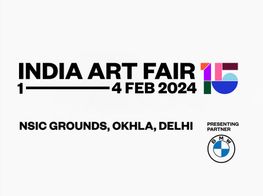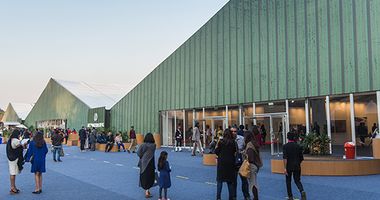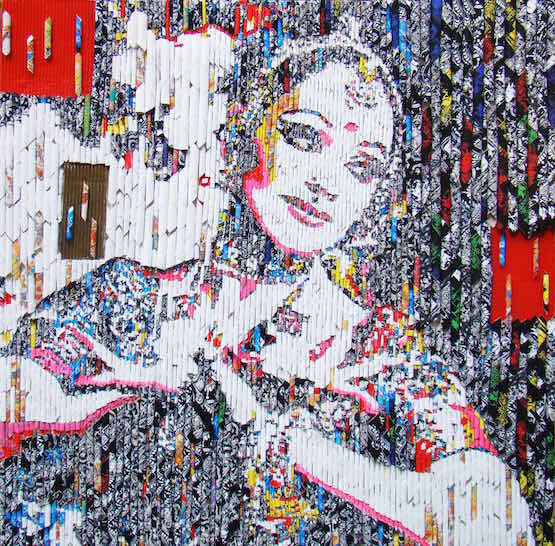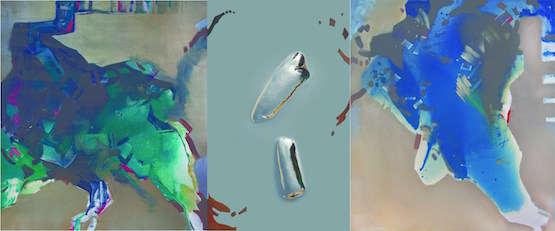Neha Kirpal
Image: Neha Kirpal, Founder and Director, India Art Fair. © Abhishek bali photography
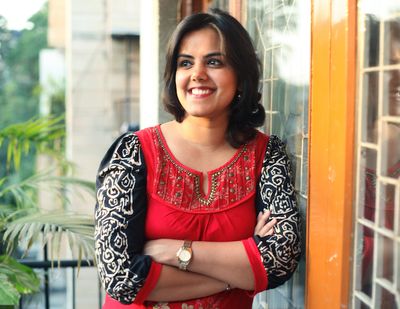
Image: Neha Kirpal, Founder and Director, India Art Fair. © Abhishek bali photography
On 28th January 2016, the 8th edition of India Art Fair will open to the public in New Delhi. Founded by Neha Kirpal, the fair has grown into South Asia's leading platform for modern and contemporary art, and a portal to the region's cultural landscape.
Not driven solely by the desires of the art market, India Art Fair takes inspiration from other global art expositions, such as the Venice Biennale, and as such brings together institutions, curators, gallerists, collectors, academics, and the general public. Kirpal has carved out a unique platform for South Asian art, where both the market and education co-exist, with the aim of increasing discourse and growing global interest in this region's modern and contemporary art.
Prior to the fair's opening Ocula discussed with Kirpal her motivations for founding the event, the challenges she faces, how India Art Fair stands out from the crowd, and her plans for the future.
KFBefore founding India Art Fair, you worked in events, marketing and PR. How do you feel your background has influenced the nature of India Art Fair?
NKI've always been interested in culture and creative spaces. I moved back to India from the UK because the untapped potential of the cultural spaces here was very exciting. The vision for the India Art Fair has always been to make art more accessible and less intimidating to a wider pool of people, and for this my experience in marketing and PR has undoubtedly been of use to me.
The academic qualification I gained whilst studying for my Masters has definitely helped, but it was really living in London, seeing the huge variety of art, and the accessibility of it that inspired me to open up a world that was (and to a certain extent still is) quite closed in India. It inspired me to be a pioneer in this field and create something that didn't exist in India, and yet was much needed. I am a patriot at heart and delighted to have contributed to the growth of the contemporary Indian art scene by creating a sustainable business model, and make it an example in the creative industries, for others to follow.
KFYou first launched India Art Fair in 2008, just after Lehman Brothers collapsed, it must have been a difficult time to launch an art event? Now, in its 8th edition, what are the greatest challenges you face in presenting the event?
NKWhilst the Indian art market has shown significant growth in the past five to seven years, it is still in its developing stages. As such, we need to stay attuned to its changes, and be adept to develop and grow. It's an exciting phase for the market now; there is significant international interest building for South Asian art, and contemporary Indian artists are gaining significant recognition across the globe. Also an ongoing concern is the need for more government support and better infrastructure at art events in the country.
We have had some help from the Indian government, such as when they granted us temporary museum status. However, there is a lot more to be done; we need to convince various government departments that contemporary art is good for the economy, good for India's image as a country, and deserves the government's help. Red tape is a real issue, and every year we work hard with our exhibitors to make sure that the fair goes smoothly.
KFMany people feel the contemporary art world is saturated with art fairs and biennials, creating increasing competition. How have you chosen to navigate this growing problem?
NKIt is important that the fair distinguishes itself with a strong identity relevant to its context. As such, this year we have adjusted our focus and programming to provide a more concise, selective roster of galleries and turn the fair into a definitive reference point for South Asia. This has become a defining strategic focus for the fair.
KFYour Speakers Forum has gained considerable acclaim over the years. What are the highlights for the upcoming fair?
NKThis year there is great breadth of speakers across various sectors and disciplines. Some of the highlights include a talk on collecting and public engagement, with high-profile collectors and patrons such as Tariq al Jaidah (founder of Katara Art Centre, Doha), Haro Cumbusyan (founder of Collectorspace, Istanbul), and Lu Xun (collector and founder of the Sifang Art Museum, Nanjing). There is, in addition, a panel titled A New Generation of South Asian Collectors, aimed at cultivating interest across a rapidly developing younger collector base.
KFAlongside the galleries you also host institutions, including the likes of the Delfina Foundation in London and the Korean Cultural Centre in New Delhi. This seems to be a unique aspect of the fair, please would you tell us a little more about this aspect?
NKThe_Institutional_ section creates an opportunity to bring specially commissioned projects to the fair, resulting in new and unusual pieces. This year the Delfina Foundation are presenting a project from the London based spatial practitioners Cooking Sections entitled The Empire Remains, which uses installation, performance, mapping and video to explore the infrastructure and cultural imaginaries that were set up by the British Empire.
KFYou appear to place considerable importance on education, organising curator tours around the exhibits—would you talk a little more about your decision to bring together the market and education?
NKBesides its commercial role as a trade fair for art, an art fair also plays a major role in generating public interest and awareness about art by taking it to the public and spreading the knowledge base for art. Arts education is essential for the market, because it's required to build the next generation of collectors.
KFYou mentioned that this year you are aiming to expand the fair's focus to South Asia. Part of this expansion includes introduction of the Pakistan Pavilion — how did this come about?
NKThe fair has always sought to represent artists from across the subcontinent, but this year we are really consolidating this position, particularly through the introduction of a new section called Platform. This will represent young emerging artists, key art spaces and collectives who might never otherwise find their place at an art fair and among its audiences. Participants include Blueprint12 (India), Nepal Art Council (Nepal), Theertha Artists Collective (Sri Lanka), Taseer Art Gallery (Pakistan), and Swaraj Art Archive (India).
Every art fair has to reflect its context, and ours is not just India but the wider South Asian region to which we are historically and artistically tied. We provide an opportunity for our international visitors to get their fingers on the pulse of an increasingly significant art scene and we hope this adds to our appeal. —[O]

